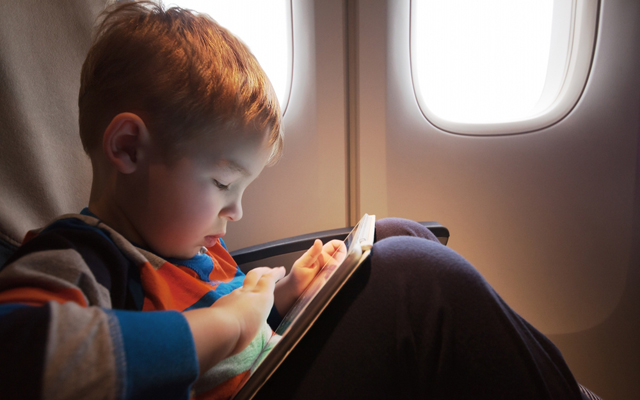
Young flyers take just 49 minutes and 47 seconds to ask the dreaded, ‘’are we there yet?’’, according to Emirates. With parents battling the boredom threshold, the airline teamed up with Sandi Mann, a psychologist and boredom specialist at the University of Central Lancashire, to develop the Child Boredom Quotient to help parents plan activities to catch boredom before it sets in.
The study also revealed that 64 per cent of parents worry about entertaining their children while 43 per cent expressed concerns about their children disturbing other passengers.

Bribery techniques such as giving out snacks (41 per cent) in exchange for good behaviour were often used to keep the peace. Other methods of distraction include employing electronic devices (33 per cent) even if they are not allowed at home, handing out new toys (27 per cent) or trying to tire out their children by running around the airport before boarding (16 per cent).
However, the quotient suggests that keeping children entertained is a way more precise science. Mann said: “Parents of children aged three to four will start to find that this is when their children are physically very active, gaining independence and when they need more sophisticated things to entertain them than they did when they were younger.
“For instance, the ‘electronic babysitter’ while popular for a flight may not work for all age groups and parents of younger children will find that they have less attention span for this than older ones. Breaking up this passive activity for active or creative ones will stop children becoming bored, restless and disruptive.’’
When engaging in an activity on board, films are the most popular for keeping children occupied from around 40 minutes for the youngest age group (0-2) to 1 hour 45 minutes for the oldest (11-12). This is followed by games either on a smart device or on the inflight entertainment system (keeping kids occupied from 30 minutes for the youngest to 1.5 hours for the oldest).
Sleep is the next most time consuming activity after electronic activity. Surprisingly, there is very little difference across the ages with parents reckoning that all children from 0-12 sleep for around 80 minutes on a plane.
Meanwhile, creative pursuits such as drawing was the most popular until age nine when quizzes and puzzles become more engaging. Colouring and sticker books have most appeal to the younger ones.





















